Table of content
Introduction
Sushi, an iconic Japanese dish, has transcended cultural boundaries to become a beloved culinary delight worldwide. Among the myriad of sushi varieties, salmon sushi stands out due to its rich, buttery flavor and vibrant color. Whether you’re a seasoned chef or a culinary enthusiast eager to explore new recipes, making salmon sushi at home can be both rewarding and fun. This comprehensive guide will walk you through the process of crafting perfect salmon sushi, from selecting the right ingredients to mastering slicing and rolling techniques. By the end, you’ll be able to prepare delicious, restaurant-quality salmon sushi that will impress your friends and family.
Understanding the Basics
Before diving into the recipe, it’s crucial to understand the fundamental elements of sushi making. Sushi is an art form that combines precision, technique, and aesthetic appeal. Here are some key concepts to keep in mind:
-
Rice: Sushi rice, also known as shinmai or glutinous rice, is the foundation of sushi. It’s cooked with a specific ratio of water and seasoned with a mixture of rice vinegar, sugar, and salt known as su (vinegar dressing). This dressing not only flavors the rice but also helps it stay moist and sticky, making it easier to roll and hold the ingredients together.
-
Fish: Freshness is paramount when choosing fish for sushi. Salmon should be firm, moist, and have a clean, fresh scent. Avoid fish with a strong fishy odor or slimy texture, as these are signs of spoilage.
-
Nori: Edible seaweed sheets (nori) are used to wrap sushi rolls. They add a subtle oceanic flavor and provide a crisp texture contrast to the soft rice and fish.
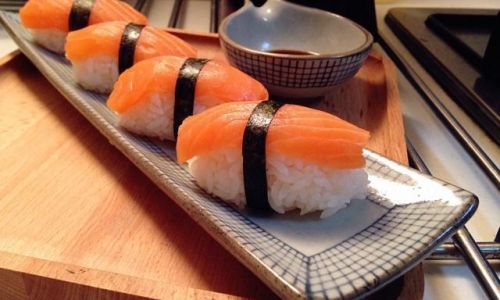
-
Tools: Having the right tools can make a significant difference in the quality and ease of sushi preparation. Essential tools include a sushi rice paddle (hanakiri), a bamboo sushi mat (makisu), a sharp knife, and a damp cloth to keep the rice from sticking to the knife or your hands.
Ingredients
-
For the Sushi Rice:
- 2 cups of sushi rice
- 2 1/4 cups of water
- 1/4 cup of rice vinegar
- 2 tablespoons of sugar
- 1 teaspoon of salt
-
For the Salmon Sushi:
- 1 pound of fresh salmon fillet, skin-on (preferably salmon sashimi grade)
- 4-6 sheets of nori
- 1 avocado, thinly sliced
- 1 cucumber, thinly sliced into sticks
- Pickled ginger (gari) for garnish
- Wasabi paste (optional)
- Soy sauce for serving
- Pickled radish (daikon) or other preferred toppings
Equipment
- Sushi rice paddle (hanakiri)
- Bamboo sushi mat (makisu)
- Large pot with tight-fitting lid for cooking rice
- Rice cooker (optional but recommended)
- Sharp knife
- Measuring cups and spoons
- Mixing bowls
- Damp cloth or paper towels
Step-by-Step Instructions
Preparing the Sushi Rice
-
Rinse the Rice: Place the sushi rice in a fine-mesh sieve and rinse under cold running water until the water runs clear. This removes excess starch and ensures the rice cooks evenly.
-
Cook the Rice: Transfer the rinsed rice to a pot with a tight-fitting lid. Add 2 1/4 cups of water (this is typically a 1:1.1 ratio of rice to water). Bring to a boil over medium-high heat, then reduce the heat to low, cover, and simmer for about 15-20 minutes, or until the water is absorbed and the rice is tender. Alternatively, use a rice cooker set to the “white rice” setting.
-
Prepare the Su Dressing: While the rice is cooking, combine the rice vinegar, sugar, and salt in a small saucepan. Heat gently until the sugar and salt are dissolved, then remove from heat and let cool slightly.
-
Season the Rice: Once the rice is cooked, transfer it to a large mixing bowl. Using a sushi rice paddle or wooden spoon, gently fold in the su dressing a little at a time, being careful not to crush the grains. Fan the rice lightly with a piece of cardboard or a fan to help cool it down and absorb any excess moisture. Let the rice sit for about 10-15 minutes to allow the flavors to meld.
Preparing the Salmon
-
Slice the Salmon: Place the salmon fillet skin-side down on a cutting board. Using a sharp knife, slice the salmon into thin, even pieces about 1/4-inch thick. Aim for slices that are neither too thick (which can make rolling difficult) nor too thin (which can cause the fish to tear).
-
Chill the Salmon: Place the sliced salmon on a plate lined with parchment paper and cover with plastic wrap. Chill in the refrigerator for at least 15 minutes to firm up. This makes it easier to handle and roll.
Rolling the Salmon Sushi
-
Prepare the Sushi Mat: Place a bamboo sushi mat on a clean, flat surface with the bamboo strips running horizontally. Cover the mat with a piece of plastic wrap or a damp cloth to prevent the rice from sticking.
-
Lay Down the Nori: Place a sheet of nori on the sushi mat, shiny side down.
-
Spread the Rice: Wet your hands slightly to prevent sticking, then scoop a handful of seasoned sushi rice onto the nori. Spread the rice evenly over the nori, leaving a 1/2-inch border at the top edge (this will help seal the roll). Use gentle pressure and the flat side of the paddle to create an even layer.
-
Add Fillings: Place a row of salmon slices in the center of the rice, slightly overlapping them. Add a few slices of avocado and cucumber on top of the salmon. If using wasabi, spread a thin layer along the salmon before adding other toppings.
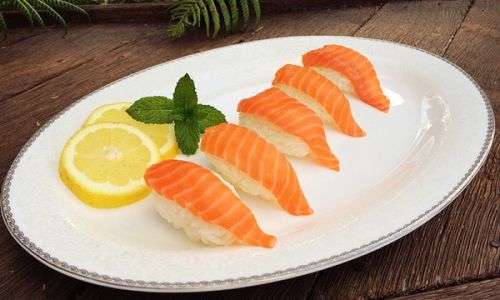
-
Roll the Sushi: Lift the edge of the sushi mat closest to you and start rolling tightly away from you, using the mat to help shape and compress the roll. Once you reach the end, gently press to seal the roll. Use the mat to shape the roll into a cylinder, applying even pressure to ensure it holds its shape.
-
Seal the Roll: Moisten the uncovered edge of the nori with a little water, then press it firmly to seal.
-
Slice the Roll: Using a sharp knife, slice the roll into bite-sized pieces, about 1/2-inch thick. Wipe the knife clean with a damp cloth after each cut to prevent sticking.
Serving and Garnishing
-
Arrange the Sushi: Arrange the sushi pieces on a serving plate with a slight gap between each piece to maintain their shape.
-
Garnish: Garnish with pickled ginger, pickled radish, or any other preferred toppings. Serve with soy sauce on the side for dipping.
-
Enjoy: Serve immediately while the sushi is fresh and the flavors are vibrant. Pair with a cup of green tea or sake for a traditional Japanese dining experience.
Tips for Perfect Salmon Sushi
-
Use High-Quality Ingredients: The quality of your ingredients will directly impact the taste and texture of your sushi. Always opt for fresh, sashimi-grade salmon and high-quality sushi rice.
-
Keep Everything Cold: Working with cold ingredients helps maintain the firmness and freshness of the salmon and prevents the rice from becoming sticky and difficult to handle.
-
Practice Precision: Sushi requires precision in slicing and rolling. The more you practice, the better your results will be.
-
Use a Sharp Knife: A dull knife can crush the rice grains and tear the fish. Invest in a good-quality, sharp knife specifically for sushi preparation.
-
Don’t Overfill: Overfilling the sushi roll can make it difficult to roll and can cause it to fall apart. Stick to a single layer of fillings for easier rolling and a more presentable final product.
Conclusion
Making salmon sushi at home is a rewarding culinary endeavor that combines artistry with deliciousness. By following this step-by-step guide, you’ll be able to create beautiful, flavorful sushi rolls that rival those found in restaurants. Remember, the key to success lies in using high-quality ingredients, maintaining precision, and practicing patience. With a bit of practice, you’ll soon be a sushi-making pro, delighting your loved ones with your culinary creations. Enjoy your sushi-making journey!
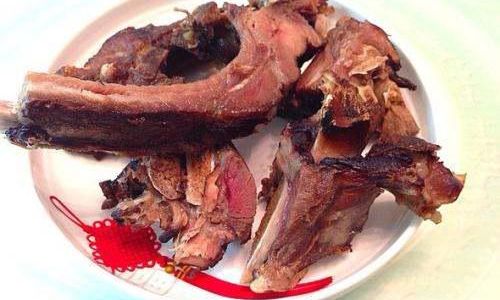

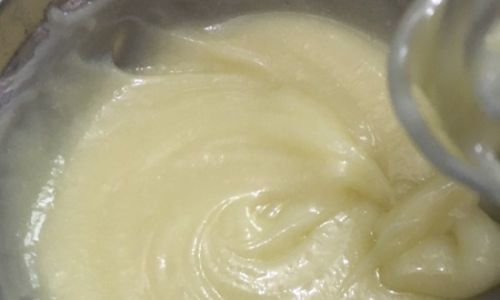

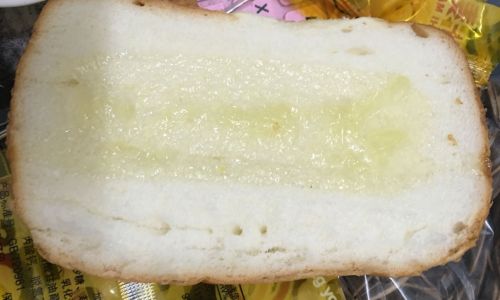
0 comments